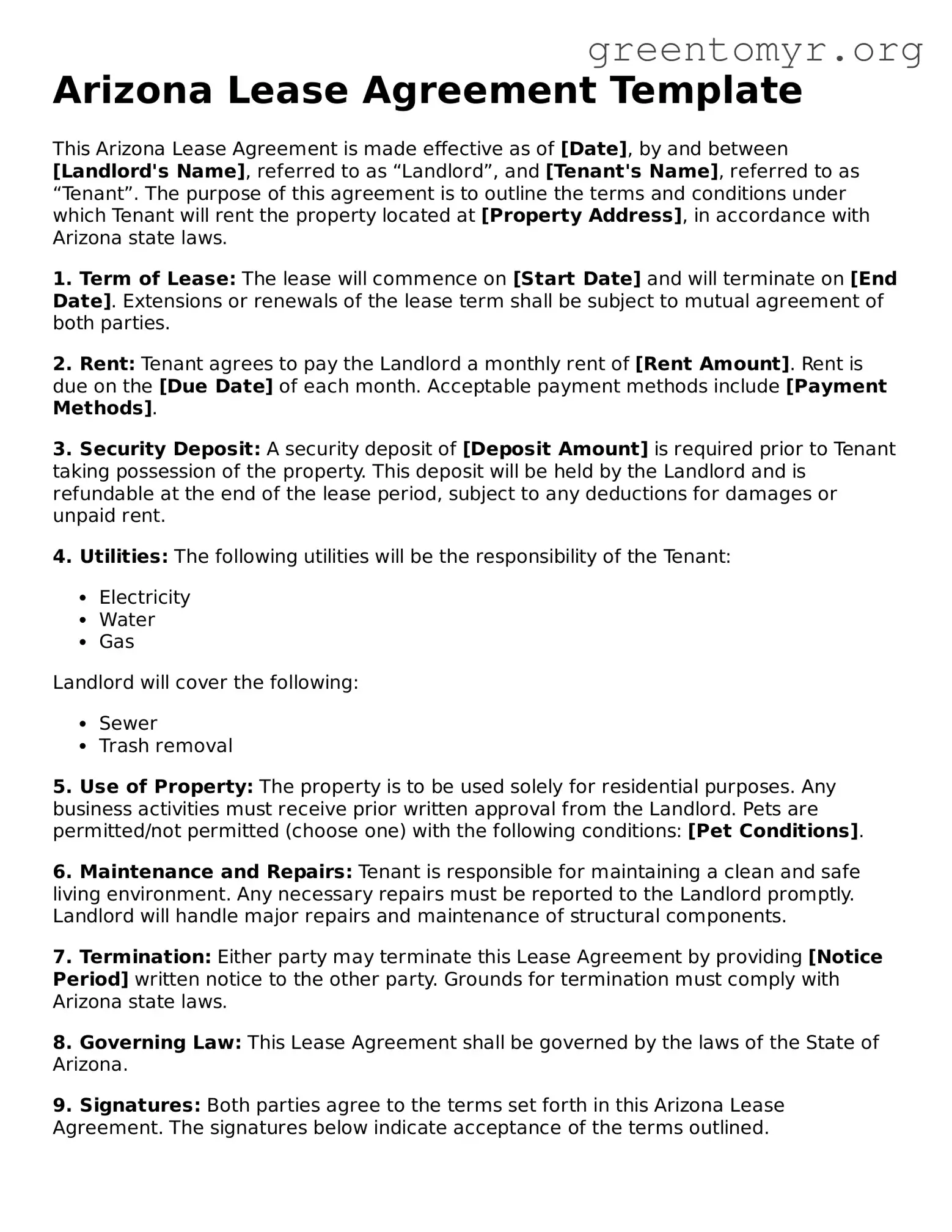Arizona Lease Agreement Template
This Arizona Lease Agreement is made effective as of [Date], by and between [Landlord's Name], referred to as “Landlord”, and [Tenant's Name], referred to as “Tenant”. The purpose of this agreement is to outline the terms and conditions under which Tenant will rent the property located at [Property Address], in accordance with Arizona state laws.
1. Term of Lease: The lease will commence on [Start Date] and will terminate on [End Date]. Extensions or renewals of the lease term shall be subject to mutual agreement of both parties.
2. Rent: Tenant agrees to pay the Landlord a monthly rent of [Rent Amount]. Rent is due on the [Due Date] of each month. Acceptable payment methods include [Payment Methods].
3. Security Deposit: A security deposit of [Deposit Amount] is required prior to Tenant taking possession of the property. This deposit will be held by the Landlord and is refundable at the end of the lease period, subject to any deductions for damages or unpaid rent.
4. Utilities: The following utilities will be the responsibility of the Tenant:
Landlord will cover the following:
5. Use of Property: The property is to be used solely for residential purposes. Any business activities must receive prior written approval from the Landlord. Pets are permitted/not permitted (choose one) with the following conditions: [Pet Conditions].
6. Maintenance and Repairs: Tenant is responsible for maintaining a clean and safe living environment. Any necessary repairs must be reported to the Landlord promptly. Landlord will handle major repairs and maintenance of structural components.
7. Termination: Either party may terminate this Lease Agreement by providing [Notice Period] written notice to the other party. Grounds for termination must comply with Arizona state laws.
8. Governing Law: This Lease Agreement shall be governed by the laws of the State of Arizona.
9. Signatures: Both parties agree to the terms set forth in this Arizona Lease Agreement. The signatures below indicate acceptance of the terms outlined.
_____________________________
Landlord's Signature
Date: ________________
_____________________________
Tenant's Signature
Date: ________________
